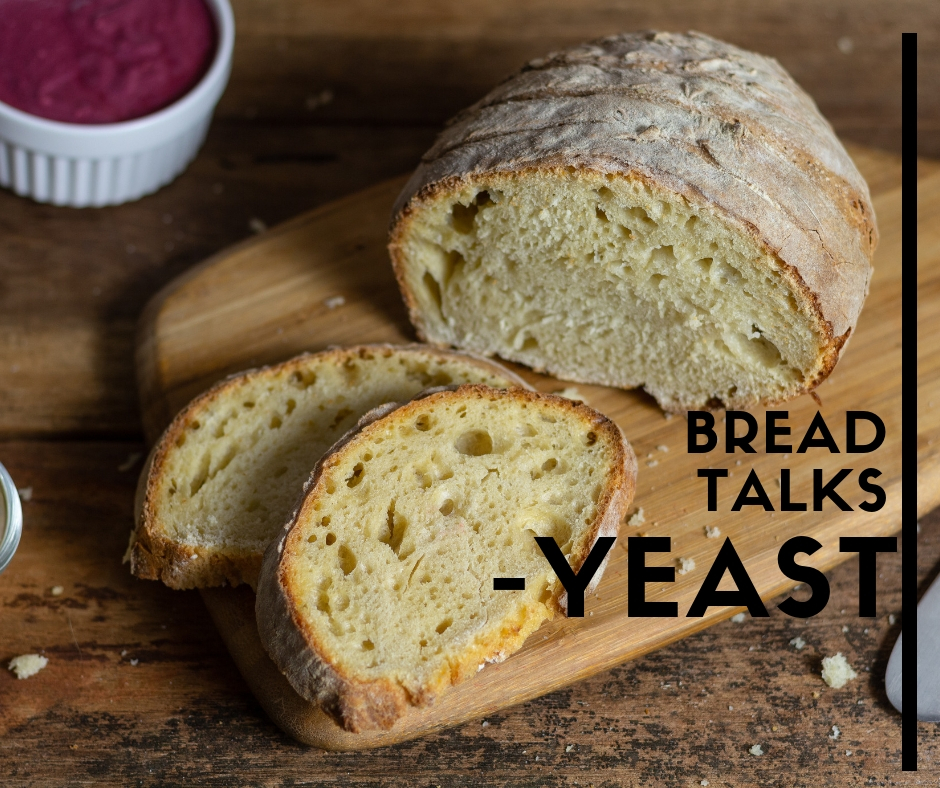
Hey everyone!
#Yeast #BreadTalks
Bread is food, not a treat!
Let us talk and understand the aspect of YEAST in Bread making!
It is a long post, read with patience!
With soooo many breads that I am posting every day I thought of having a live chat on yeast and flour yesterday. For those of you who missed it, here is the link to the video –
https://www.facebook.com/smritis.special/videos/1078740932286810/
Now let’s talk about Bread.
(Consider the following as my understanding and not some scientific definition)
What is BREAD?
When a mixture of Flour, water and salt is baked, it gives you bread.
As simple as that.
There can be two categories of bread –
1. LEAVENED BREAD
This mostly includes all the breads that are made to rise with the help of carbon dioxide.
2. UNLEAVENED BREAD
This is the bread which is not made to ferment or rise. This category includes all of you Flat Breads like Roti, Pita, Lavash, Naan etc.
Leavened Bread is what we are going to talk about. It can be divided into two categories –
1. YEAST BREAD
This includes all breads made with carbon dioxide due to fermentation of Yeast.
2. SODA BREAD
This includes all breads made with carbon dioxide due to reaction between baking soda and some acid like lactic acid (buttermilk) or citric acid (lemon), acetic acid (vinegar).
Yeast Bread can further be divided into two categories –
1. SOURDOUGH BREAD
These are made with naturally available wild yeast captured from the environment.
2. COMMERCIALLY YEASTED BREADS
These are made with readily available commercial yeasts.
Sourdough is a whole discussion in itself which we will do in a future post.
Today we’ll talk about Commercially Yeasted Breads.
What is YEAST?
Let’s go back to our middle school days when we learned about single cell organisms. Remember?
Yeast is microscopic single celled fungus (so it’s a plant!) that reproduce by fission (Multiplying on it’s own). It grows with the help of sugar by converting it into alcohol and carbon dioxide.
This reaction of yeast, is what we bread bakers use to make bread. The carbon dioxide is trapped in the bread which gives a light texture and the alcohol adds flavour.
Here’s a video of how yeast grows and multiplies –
https://www.youtube.com/watch?v=GFEgB_ytDZY
These are the various varieties of Commercial Yeast –
1. FRESH
This is yeast in the liquid form. This needs to be stored in the refrigerator or freezer. This needs to be dissolved in water and activated before use.
2. ACTIVE DRY / DRY
This is the dehydrated version of fresh yeast. This also needs to be dissolved in water before using.
3. INSTANT
This is also a dehydrated fresh yeast which has some added yeast enhancers to make the yeast grow faster. This does not need to be dissolved in water.
4. RAPID RISE
This is an instant yeast which is loaded even more with yeast enhancers which makes it grow ‘rapidly’. This does not need to be dissolved in water.
After forming a dough with yeast, what is the importance of first proofing?
First proofing is to develop the flavour of the dough. Slow and steady rise of yeast will give maximum flavour to the bread. Being in a hot country it is best to slow rise the dough in the fridge. This is called cold fermentation.
The slow rise also helps the yeast break down the complex carbohydrates in the wheat which makes it easier for our body to digest it.
When the dough rises too fast, there is not enough time for the yeast to break down the carbs of wheat. Therefore, although you will get a nice looking bread, but you will not get much nutrients from it.
This is why, I recommend you use lesser instant yeast than active dry in a recipe and even lesser rapid rise. By using lesser yeast and cold proofing the dough, it will be much better for your health.
There you go!
I hope you feel a little closer to yeast now and don’t find it too difficult or intimidating to use.